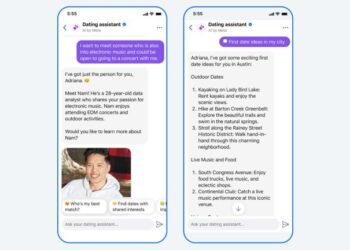Select Language:
Five AI Prompts to Jumpstart Your Creativity
Creative blocks can sneak up on you, especially when you’re working against deadlines. After experimenting with various methods, I’ve discovered five AI prompts that consistently help me break free from stagnation and reignite my creative spark.
1. Brainstorming for Creative Concepts
When I’m facing writer’s block or can’t seem to get inspired for my next photo shoot, I find that discussing ideas is crucial. If a human collaborator isn’t around, I turn to AI for quick brainstorming. It’s a fantastic way to push past creative barriers without waiting for input from others.
For example, when I needed ideas for a spaghetti-themed photoshoot, I used this prompt:
“As a seasoned art director, what unique phone photography ideas do you have for capturing spaghetti?”
AI often presents me with fresh perspectives, ranging from abstract to geometric styles. It surprises me to take artistic shots of raw ingredients, opening up new avenues for creativity.
2. Enhance Your Research Process
As creatives, it’s easy to fall into a routine, using the same techniques over and over. Breaking free from the norm often requires a little nudge. Traditional research can consume valuable time, but that’s where AI shines.
Instead of spending hours scouring through online videos or articles, AI can quickly gather relevant information for me. For example, I might ask:
“What affordable equipment should I use for capturing dark, moody food photos with my phone?”
Within seconds, I received insightful recommendations that would have taken me hours to compile by myself.
3. Simplifying Complex Concepts
Even experienced creatives can benefit from simplifying technical concepts. For instance, I have a solid grasp of color theory, yet I often forget to apply these principles in my work.
When I consult AI like ChatGPT or Claude, I can break down these concepts and revisit them with a fresh perspective. This collaboration encourages me to think outside the box and approach new challenges with renewed confidence. I can use prompts like:
“How can I create color harmony in my wildlife photography?”
This practice not only expands my knowledge but also helps me push creative boundaries.
4. Visualizing Designs
Whether I’m mapping out a photo layout or drafting a design, storyboarding has become a crucial part of my creative process, and AI has made it incredibly efficient. I once used AI to help plan an exhibition layout—transforming a linear setup into a more interesting and engaging visual experience.
I provided the dimensions of the exhibition space, and the AI generated various layout ideas based on the number and size of images I planned to display. This digital assistance saved me time and energy, allowing me to focus on the creative aspects.
5. Editing for Different Moods and Audiences
When editing my work, I usually gravitate toward my established style. However, I’m challenging myself to explore diverse editing techniques using AI. For example, I might upload a photo and ask:
“How can I edit this photo to evoke a vintage feel?”
Even though Claude can’t directly edit my images, it provides detailed step-by-step instructions, inspiring me to experiment with new editing styles and broaden my creative horizons.
Final Thoughts
Although I was initially hesitant to incorporate AI into my creative processes, I’ve come to understand its potential as a valuable tool. AI not only saves me time but also allows me to explore different facets of my art. Ultimately, it’s not about replacing my creativity; it’s about enhancing it and helping me envision new possibilities.







